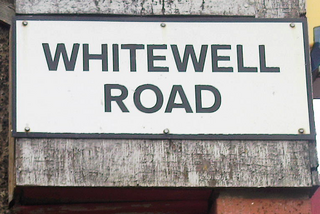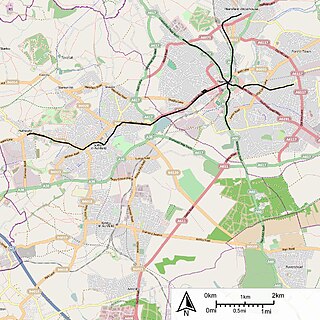
Brush Traction is a manufacturer and maintainer of railway locomotives, part of Wabtec Corporation, based at Loughborough in Leicestershire, UK, and situated alongside the Midland Main Line.

Nottingham and District Tramways Company Limited was a tramway operator from 1875 to 1897 based in Nottingham in the United Kingdom.

The Kingston upon Hull tramway network was a network of 4 ft 8 1⁄2 instandard gauge tram lines following the five main roads radially out of the city centre of Kingston upon Hull, East Riding of Yorkshire, England. Two of these lines went west, and two east. The fifth went to the north, and branched to include extra lines serving suburban areas. Additionally a short line linked the city centre to the Corporation Pier where a ferry crossed the Humber Estuary to New Holland, Lincolnshire.
The City of Birmingham Tramways Company Ltd operated trams in Birmingham, England, from 1896 until 1911.

A tram engine is a steam locomotive specially built, or modified, to work on a street, or roadside, tramway.

The Christchurch tramway system was an extensive network in Christchurch, New Zealand, with steam and horse trams from 1882. Electric trams ran from 1905 to 1954, when the last line from Cashmere to Papanui was replaced by buses. A loop track was reopened in the central city in 1995 as a tourist attraction. The track is standard gauge, 1,435 mm.
The Swansea Improvements and Tramway Company operated street trams in and around Swansea in Wales from 1878 to 1937.

Dundee Corporation Tramways formerly served the City of Dundee in Scotland. The Corporation had financed the construction of a horse tramway in 1877, but had then leased it to the Dundee and District Tramways Company. They had replaced most of the horse trams with steam tram locomotives pulling trailer cars from 1884, but in 1897 the Corporation decided that it would run the tramway system itself. After some negotiation and the payment of compensation, they took over the system in 1899, with a view to electrifying it. Electric trams started running in 1900, and the changeover was completed in 1902.

Coventry Corporation Tramways operated a tramway service in Coventry, England, between 1912 and 1940.

Tramways in Exeter were operated between 1882 and 1931. The first horse-drawn trams were operated by the Exeter Tramway Company but in 1904 the Exeter Corporation took over. They closed the old network and replaced it with a new one powered by electricity.
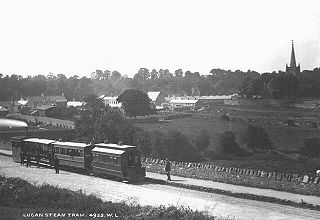
The Dublin and Lucan Steam Tramway operated a 3 ft narrow gauge steam tramway service between Dublin and Lucan between 1880 and 1897. The company was renamed as the Dublin and Lucan Electric Railway Company and steam power was replaced by electricity in 1897. This service ran until 1925.
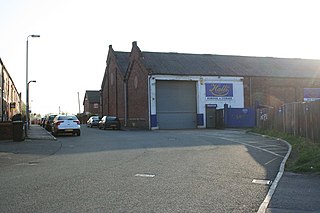
Wigan Corporation Tramways operated a tramway service in Wigan, England, between 1901 and 1931. The first tramway service in the town was run by the Wigan Tramways Company, whose horse trams began carrying passengers in 1880. They began replacing horses with steam tram locomotives from 1882, but the company failed in 1890, when a Receiver was appointed to manage it. The Wigan & District Tramways Company took over the system in 1893, and ran it until 1902. Meanwhile, Wigan Corporation were planning their own tramway system, obtaining an authorising Act of Parliament in 1893, and a second one in 1898. This enabled them to build electric tramways, and in 1902, they took over the lines of the Wigan & District Tramways Company.

Bolton Corporation Tramways operated a tramway service in Bolton between 1899 and 1947.

The 3 ft narrow gauge Portstewart Tramway operated tramway services between Portstewart and Portstewart railway station at Cromore from 1882 to 1926.
Wolverhampton Tramways Company operated a tramway service in Wolverhampton between 1878 and 1900.
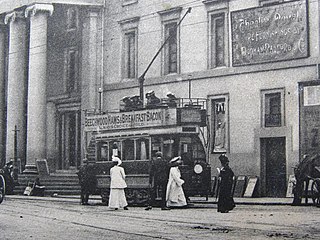
The tramways in Plymouth were originally constructed as four independent networks operated by three different companies to serve the adjacent towns of Plymouth, Stonehouse and Devonport in Devon, England. The merger of the 'Three Towns' into the new borough of Plymouth in 1914 was the catalyst for the three companies to join up under the auspices of the new Plymouth Corporation. The network was closed in 1945, partly as a result of bomb damage during World War II.
Bradford Corporation Tramways were a tramway network in the city of Bradford, West Riding of Yorkshire, England which operated trams from 1882 until 1950 and trolleybuses from 1911 until 1972. The track gauge of the tramways was 4 ft.

Stockport Corporation Tramways operated a tramway service in Stockport, England, between 1901 and 1951. It was preceded by a horse tramway from Levenshulme to Stockport, which opened in 1880, and was ultimately run by the Manchester Carriage and Tramways Company. A second independent horse tramway opened in 1890, running to Hazel Grove. In 1899 the Corporation bought the first line, electrified it, and leased it back to the operating company. Their powers to buy the Stockport and Hazel Grove Tramway, authoirsed by the same Act of Parliament, were not exercised until 1905.


